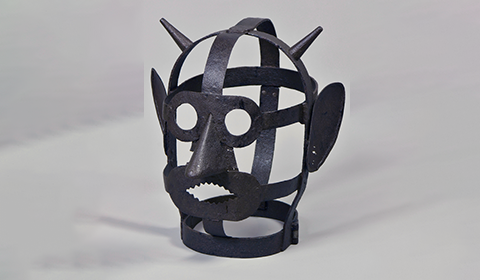
The Macabre McManus
It’s spooky season and to inspire your Halloween costumes here are some objects drawn from our creepy collections! Did you know that trick-or-treating was originally a Scottish and Irish tradition? Known as ‘guising’, children (and adults) would dress as ghouls so they could blend in with the spirits that roamed the earthly plane on All Hallows Eve, thus remaining undetected and unharmed…All of these items are on display so come and see just how Macabre the McManus can be!
Frankenstein: Frankenstein’s Dundee Comic (2019)
Between 1812 and 1814 Mary Shelley, author of the classic novel ‘Frankenstein’, spent 14 months in Dundee with the family of William Thomas Baxter. First published in 1818, it was in a later edition of the book that Shelley acknowledged the influence of Dundee on her creativity. Two comics - Frankenstein Returns and Frankenstein's Dundee - were created as part of the Being Human festival, and reimagine Shelley’s life in Dundee and what becomes of her creation. They feature scripts by Professor Chris Murray and others, and artwork by Norrie Millar, Elliot Balson and others. See them on display in the Making of Modern Dundee Gallery.
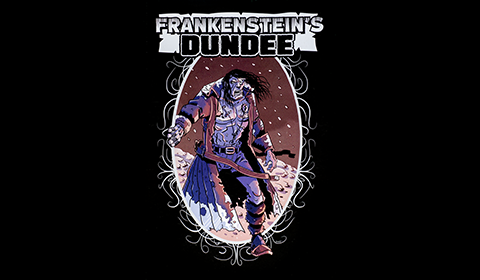
Image credit: Dundee Art Galleries and Museums Collection (Dundee City Council)
Wizard: The Alchemist (17th century) by Egbert van Heemskerck (Studio of)
A popular subject with the Dutch School, this work shows the alchemist in his cavernous laboratory. Prominence is given to the still-lifes of various pots and jars. The large open books offer the promise of finding the formula for the legendary philosopher's stone, believed to turn base metals into gold. On display in the Dundee and the World Gallery.
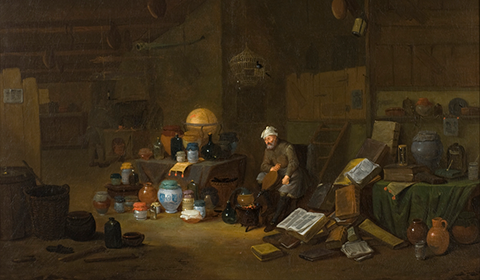
Image credit: Dundee Art Galleries and Museums Collection (Dundee City Council)
Witch: Scold’s Bridle (c.17th century)
Branks were in use from the 1600s onwards, and were also called “scold’s bridles”. Women accused of slander or swearing were made to wear a brank on their heads to prevent them speaking, and were then led through the streets. The addition of horns on this example – believed to be from Germany, the Netherlands or Belgium - reinforces Early Modern patriarchal and sexist ideas of the innate evil of women as descendants of the original temptress, Eve. These were dangerous ideas that would fuel the ‘witch’ crazes of the 16th – 18th centuries. On display in the Making of Modern Dundee Gallery.
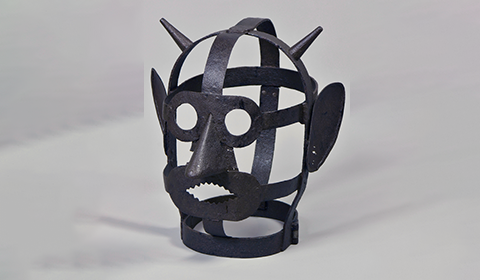
Image credit: Dundee Art Galleries and Museums Collection (Dundee City Council)
Ghost: Scene from Scott’s “Peveril of the Peak” (1887) by John Pettie
An illustration to Walter Scott’s novel, and set around 1678 during Restoration England, this painting shows the moment that two children are horrified when a secret panel in the wall slides open to reveal a lady in mourning – they think she is a ghost! She is the Countess of Derby, a fugitive Royalist, who has concealed herself in a secret room. She is a truly haunting figure! On display in the Victoria Gallery.
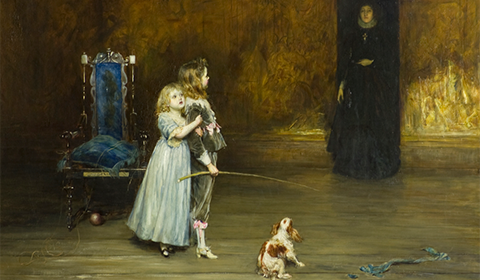
Image credit: Dundee Art Galleries and Museums Collection (Dundee City Council)
Medusa: Coffin Fitting from Ptolemaic Egypt (332-331 BC)
This rather un-scary mask made of baked Nile mud was found in Naukratis in Egypt - an area with a long association with Greece. The head was once brightly painted and decorated a wooden coffin. Today Medusa is a terrifying incarnation with snake hair and a petrifying gaze. In this, her original incarnation, she was a more benign and protective spirit. On display in What Is A Museum? Gallery.
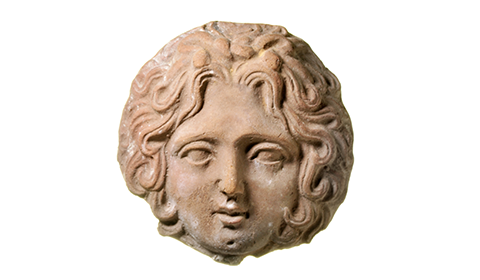
Image credit: Dundee Art Galleries and Museums Collection (Dundee City Council)
Clown: Jeepers Creepers (1971) by Eduardo Paolozzi
In this Modernist installation, Paolozzi has added clowns, insects, a pink rocket and even a parrot on a stick. The clowns with their strange titles indicate that Jeepers Creepers was created as a reaction to the British art establishment– at that time dominated by Minimalism. Paolozzi’s rough casting of the clowns was deliberate, evidence of the human hand that made it, and the title was probably inspired by the 1938 song and refers to the 12 pairs of eyes looking at us. On display in our Border Crossings: Ten Scottish Masters of Modern Art exhibition, running until June 2026.
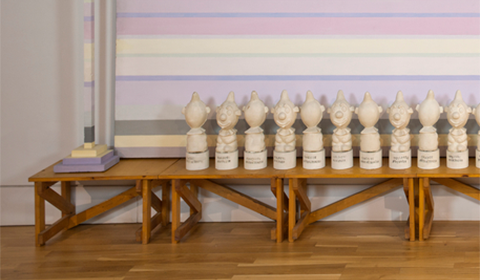
© trustees of the Paolozzi Foundation, licensed by DACS 2025. Image credit: Dundee Art Galleries and Museums Collection (Dundee City Council)


